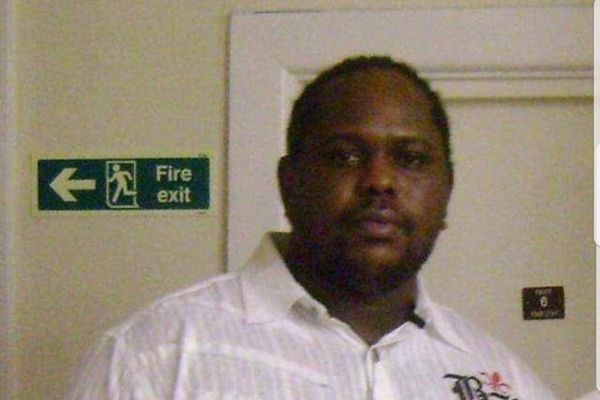If you’ve never traded options before, you probably have a lot of questions about these seemingly complex financial instruments.
Good news: You’re in the right place!
While there are many complicated-sounding option strategies, they all include at least one of two specific ingredients:
Calls and puts.
What are calls and puts?
First, the nuts and bolts explanation:
Call options are contracts that offer a buyer the opportunity to buy a certain number of shares at a set price, on a set date.
Put options work the same way, but in reverse. They offer the opportunity to sell a certain number of shares at a set price, on a set date.
By a certain number of shares, we mean 100 per contract. That “set price” is called the strike price, and that “set date” is called the expiration. Of course, these contracts aren’t free — you have to pay for them! The price you pay is called the premium.
A phrase you’ll hear a lot when you read about options is “you have the right, but not the obligation”. That just means when you buy a call or a put, you’re not going to be forced to buy or sell 100 shares of the stock. The most you can lose on a call or put is the premium you pay! That’s called defined risk.
Okay, we know — we said it wasn't too complicated. But once you take a closer look, options trading really is more simple than you might think.
How to trade calls and puts
Calls and puts are directional predictions on a stock’s price. You can use call options to make a bullish prediction on a stock, and you can use put options to make a bearish prediction on a stock.
When choosing an option, you want to select a strike price that you think the stock can surpass before the expiration date passes, with a premium that you feel comfortable risking — and potentially losing if you’re wrong.
That’s the big caveat with options: If your prediction doesn’t come true (AKA, if your option expires out of the money) by the expiration selected, your option will expire worthless.
On the other hand, options that expire in the money become worth $1 for every penny that the share price surpasses the strike price. For instance, let’s say you have a call option at the $100 strike, and the share price expires at $100.01? Your option expired worth $1. What if it expired at $101? Your option is worth $100. The share price expires at $110? That’s a $1,000 option. On and on it goes.
Ready to start trading? Try Unusual Option Activity Essential. Learn how you can follow the "smart money" with a fresh UOA trade idea each week - including technical levels so that you know where to enter and exit!
Let’s put a visual to all of these complex terms with a real trade example from Market Rebellion’s Unusual Option Activity service.

This massive option trade was originally detailed on CNBC’s Halftime Report by Market Rebellion Co-Founder Pete Najarian. Let’s break down all of its moving parts to find out what needs to happen for this trade to become profitable.
Ticker and direction

This trader bought put options in (SPY), which is an ETF that tracks the (^SPX) . That means this trader thinks that the share price of (SPY) is about to go down.
Expiration and strike

This option purchase expires in July, and the strike is $377. That means this trader is predicting that (SPY) will descend below $377 by July.
Quantity and premium

A closer look shows that this trader bought 30,000 contracts, and paid a premium of between $6.51 and $6.77 per contract to make this prediction.
But that doesn’t mean they literally paid 6 dollars and 77 cents — in order to translate option prices into what you’ll pay per contract, you have to multiply the premium by 100. Why? Remember, options are contracts offering a trader the ability to buy or sell 100 shares of a stock.
An easy way to think about it is to imagine the premium without the decimal point. In this case, this trader paid between $651 and $677 dollars per contract. That means in total, this trader paid roughly $19.92 million dollars to make this bet!
When someone spends more money on a single option trade than it costs to buy Lebron James’ house, that’s a pretty big deal. And it’s why we pay such close attention to unusual option activity.

How this trade becomes profitable
So all (SPY) has to do is make down to $377 to make this trade profitable, right?
Wrong.
Recall that the option gains a dollar of intrinsic value for every penny that it surpasses the strike price. That means if (SPY) is at $377 or higher by this option’s expiration date, all 30,000 of these contracts will expire worthless, and this trader will be at a $19.92 million dollar loss.
In order for this trade to expire profitably, it needs to surpass the breakeven point. (We know, another vocab term — yuck.) The breakeven of this put can be calculated by subtracting what the trader paid (an average of $6.64) from the strike price, which in this case is $377. That means that the breakeven on this trade is $370.36. For a call, it works the same but in the opposite direction: you would add the premium paid to the strike price to determine your breakeven.
Why? Do the math: in this example, if (SPY) finishes the day at $370.36, and the strike price of the put is $377, then the option will be worth a premium of $6.64, or $664 dollars per contract — the average amount the trader paid! They didn’t gain or lose anything, they broke even.
So we know what happens if the options expire at or above the strike price — out of the money, and worthless. And we know what happens if the options expire at the breakeven. But for fun, let’s do one more: imagine that this trader is right, and (SPY) falls to $350 by the expiration date. With a strike price of $377, the equation goes:
- $377 - $350 = $27.00 (the option premium)
- $27 * 100 = $2,700 (the real dollar value of the option)
- $2,700 * 30,000 = $81,000,000 (the total value of the 30,000 contracts at expiration of (SPY) were to expire at a share price of $350)
- $81,000,000 - $19,920,000 = $61,080,000 (the total profit of the trade in this scenario)
Slam dunk predictions like the one above don’t happen every day, but they’re certainly possible, and using options allows traders to access leverage while mitigating risk.
Continuing your option trading journey
As you can see, options trading is almost like learning a language. It can feel like a lot to take in at first, but with a little practice, you’ll be able to read through an option chain with ease.
And it’s worth it. Because as you continue in your option trading journey, you’ll soon discover that there’s a lot more you can do with these financial instruments than make leveraged bets. Options are truly a stock market swiss army knife, allowing you to include many different nuances in your predictions.
For instance, maybe you think a stock price isn’t going up or down, — rather, it’s just going to remain stagnant. Or, maybe you think that an option premium is overpriced. Perhaps you think that volatility is about to ramp up, and you want to give your trade an additional edge. All this is possible (and much more): with the power of options.







